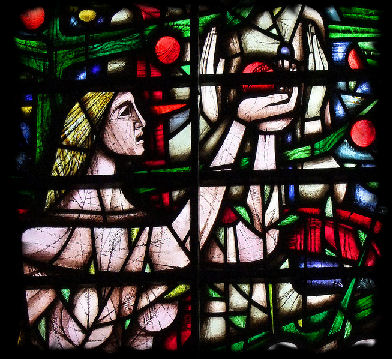
 |
| An occasional saunter
through the churches of the Square Mile |
| home | index | map | latest | about this site | resources | small print | simonknott.co.uk | norfolkchurches.co.uk | suffolkchurches.co.uk |
 London City Churches: an introduction |
There is no collection of churches anywhere in the world like the City of London churches. Eighty-seven of the city's one hundred and seven medieval churches were destroyed by fire in one fearful week in early September 1666. More than fifty of them were rebuilt in one single campaign from about 1670 to 1710. It is thanks to the genius of Christopher Wren and the artists and architects of the Wren workshop like Robert Hooke and Nicholas Hawksmoor that they form an intricate whole, whether seen from a distance (increasingly difficult) or appearing fleetingly between other buildings. They were meant to be seen as such, their steeples providing a foil to Wren's proudest creation, St Paul's Cathedral. In general, they are unequivocably
protestant churches. The medieval street pattern, in many
cases the medieval parishes, remain as a reminder of lost
Catholic London. But Wren's churches were intended for
the increasingly mature protestant theology and liturgy
that had grown out of the Elizabethan settlement,
tempered by the puritan fires of the Commonwealth period
when the world was briefly turned upside down. They were
built as preaching houses, but as more than this. The
parishes were the basic unit of local administration,
overseeing the welfare of both the souls and bodies of
their parishioners, and the churches were intended as the
Government of the Kingdom made flesh in stone. Their
shape and furnishings were designed for the Prayer Book
ceremonials of the established Church of England. There
are few English churches outside of London which were
built from scratch with the same imperatives, and
certainly no group like this.
Internally, the City
churches are opulent. Most interiors were rebuilt in the
period from 1945 to 1965 after extensive German bombing.
There are a few precious surviving interiors that predate
this, but in fact hardly any medieval furnishings survive
at all, anywhere in the City. In some of the restored
churches you'll find fixtures and fittings brought out of
store which had formerly been inside churches demolished
in the 19th and early 20th Centuries. But when you stand
inside the wonderful interiors of St Bride and St Mary le
Bow, for example, you need to remind yourself that
nothing you see was made before 1950. Some of the City
interiors are even more recent - terrorist bombs in the
1990s wrecked the lovely medieval churches of St
Ethelburga and St Helen Bishopsgate, both of which have
been restored and reinvented in new, perhaps
controversial ways. This site is a work in progress - although I have visited all the City Churches, I haven't been inside all of them yet, and there are plenty I look forward to going back to. Some of the entries are still pretty basic, but they'll be fleshed out in time. There are loads of photographs, with more to come. Once the current entries have been beefed up a bit, I'll start adding entries to City churches which no longer exist and of which no trace survives except perhaps a plaque.
Looking for The Friends of
the City Churches? Their website is here. |
| home | index | map | latest | about this site | resources | small print | simonknott.co.uk | norfolkchurches.co.uk | suffolkchurches.co.uk |
 |
| An occasional saunter
through the churches of the Square Mile |
Commission from
Amazon.co.uk supports the running of this site